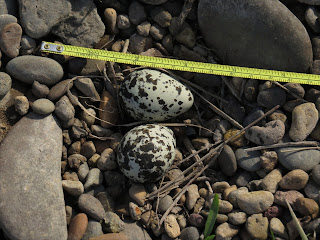This blog is very much not the place for accounts of the truly rare. Odd, I can occasionally do. My patch is a bit different, in that many local birders see White-crowned Sparrow, while I see White-throated, etc. Another difference lies in Purple Finch. Which, for whatever reason, seem more common here than what is typically seen along the Benton/Linn Co. (Oregon) border. Common enough that I get to see PUFI (4-letter banding code for Purple Finch), see the cannonical USGS reference for the whole thing, in unusual plumage.
This group is a bit prone to weirdness. I have photos of House and Purple Finch in hues that might be best described as golden, rather than red/rose/purple, and I've seen references to that being a function of diet. But green is a bit off-the-wall, in my experience. Here is the only green-hued Purple Finch I've ever seen, and that was on 2016-04-01. April Fools Day. No way was I going to post that the day I saw her.
But perhaps not so outlandish as all that. A Web search found one reference, the Purple Finch entry in John J. Audubon’s Birds of America, which seems to indicate that this hue can be common, at least toward the eastern US. OTOH, that was a long time ago, far from my patch in Oregon's Willamette Valley, and Audubon was, well, a bit dubious in some respects.
What do modern field guides have to say? In alphanumeric order, looking for any reference to 'green' I found the following.
- National Geographic Field Guide to the Birds of North America: no mention.
- Peterson Field Guide to Western Birds, 2nd edition: no mention.
- Peterson Field Guide to Western Birds, 3rd edition: no mention.
- Sibley Guide to the Birds, 1st edition: "Pacific females are washed greenish above..."
- Sibley Guide to the Birds, 2nd edition: "Pacific females are washed greenish above..."
- Stokes Field Guide to the Birds of North America: no mention.
Does this, in any way, constitute a recommendation for a field guide? Well, no. Aberrant golden hues are, in my limited experience as a patch birder, far more common amongst House and Purple Finch. I've seen dozens of golden-hued birds of each species, and exactly one greenish finch. Yet golden birds get no mention at all.
Does that mean that I regard popular field guides as equally wrong? Well, no. Tremendous effort was expended by very talented people in creating these guides. A lot of financial risk was assumed by all parties -- including publishers. Personally, I doubt that the vagaries of plumage variations can ever be adequately described in a field guide. Not least because human languages cannot adequately describe color. Ask a fly fisher what 'dunn' refers to.
I confess that Sibley is my favorite, but this is not an example of why.


